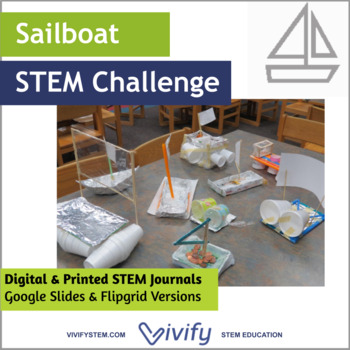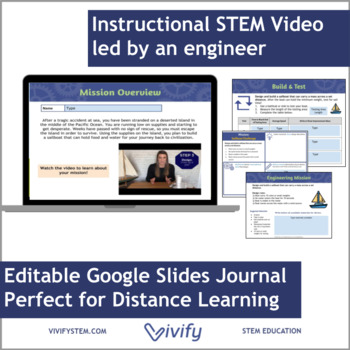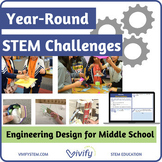STEM Sailboat Challenge Math & Engineering Activity
- PDF
What educators are saying
Also included in
- GROWING bundle for Digital STEM challenges for Middle School! Perfect to support distance learning, in-person, and hybrid classrooms using the engineering design challenges and looking for hands-on activities. Activities include printed and digital handouts to use in any classroom setting - whetherPrice $131.72Original Price $165.90Save $34.18
- Are you in need of year-round STEM activities? This growing bundle includes our most popular STEM lessons and engineering design challenges for middle school grades! Click here for more guidance on planning out a STEM class including a scope and sequence and example STEM curriculum map. Includes a SPrice $388.52Original Price $485.65Save $97.13
- Are you in need of year-round STEM activities? This growing bundle includes our most popular STEM lessons and engineering design challenges for elementary! Activities are adaptable for 1st through 5th grade with guidance provided in the teacher notes. Need help with a STEM Curriculum Map? Grab our FPrice $410.72Original Price $513.40Save $102.68
- Are you in need of year-round STEM activities? This growing bundle includes ALL Vivify K-12 STEM lessons from team challenges, engineering design, semester-long STEM units, research projects, and more! Purchase everything for 20% off individual products! Here is a sample of what is included: Stage 1Price $990.24Original Price $1237.80Save $247.56
Description
STEM Sailboat Engineering Activity Description
Updated to include an editable STEM journals, instructional video, and teacher slides!
The Sailboat STEM activity is a great way to incorporate the engineering design process into your classroom or afterschool program! Many are familiar with the boat buoyancy challenge, and this takes it one step further by adding a sail! Now students must build a boat to hold a specific weight as well as incorporate aerodynamic principals to make it move.
This hands-on activity is an engaging design challenge that allows students to work in teams, apply the engineering design process, and connect math topics to real-world applications. As a student-driven assignment, the purpose of the teacher is to act as a facilitator. You will provide the structure to the project, but students will take an active role in designing and building their sailboats. Our students have loved this activity, and we know yours will too!
Engineering Challenge: Students use the engineering design process to design and build a sailboat to carry a mass across a set distance. Students will also learn about buoyancy and surface area as well as the forces acting on the boat.
As with many STEM activities that are student-driven, this challenge can be tailored to students of various skill levels and abilities. We have used this challenge from elementary through high school levels with great success.
Included in this product:
- Detailed teachers guide with links to resources
- Photos of student examples
- Instructional video with real-world connections
- Teacher slides
- Student handouts to guide them through the design process
- Editable Google Slides STEM journals
- STEM Career Connection on Marine Engineering & Naval Architecture
- Student recording sheet for each step of the process
- Math connection problems including angles, ratios, geometry, and graphing
Looking for more STEM lessons? Our team of engineers and educators is dedicated to developing low-prep and high-quality STEM activities for any classroom! Click below to learn more:
- Vivify's Scope & Sequence + Standards Alignment
- Vivify's Resource Guide
- Learn about the 3 Stages of STEM
- Vivify STEM Membership
Customer Tips:
• Click the Green ★ to follow our store and get notifications of new products and freebies
• Leave feedback to receive TpT credit for use on future purchases
• Questions? Contact us in the Product Q&A section
♥ Connect With Us ♥
Email us: info@vivifystem.com









